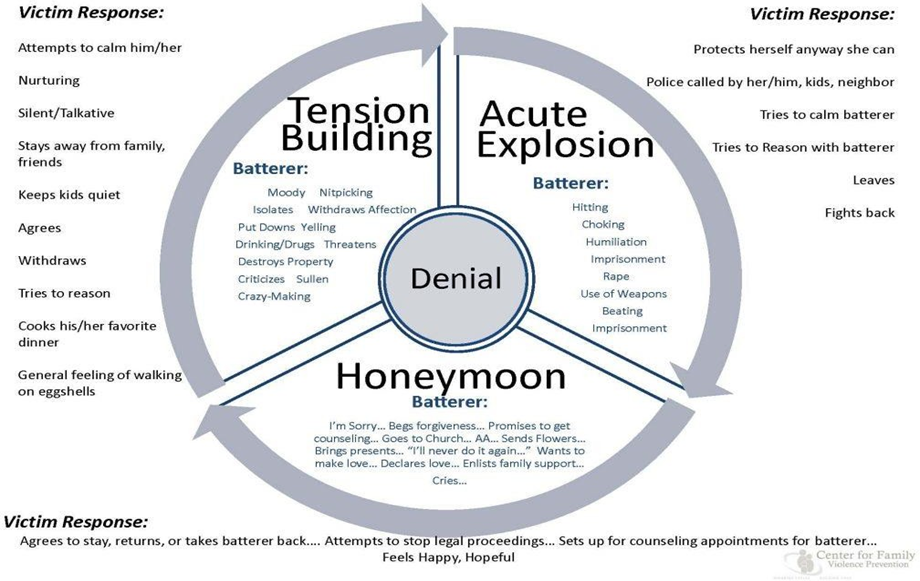A woman in a severely abusive relationship is hospitalized with severe injuries and head trauma. Her husband sends flowers to the unit and a card begging for forgiveness. The nurse recognizes this to be which phase in an abusive relationship?
Phase IV: The Forgiveness Phase
Phase III: The Honeymoon Phase
Phase II: The Acute Battering Incident
Phase I: The Tension-Building Phase
The Correct Answer is B
B. The honeymoon phase occurs after the acute battering incident and is characterized by the abuser showing remorse, apologizing, and trying to reconcile with the victim. During this phase, the abuser may express love, affection, and promises to change.
A. This phase is not typically recognized as a distinct phase in the cycle of abuse.
C. The acute battering incident is the phase characterized by the actual physical or emotional abuse. It is the culmination of tension that has been building in the relationship, leading to an explosive and violent incident.
D. The tension-building phase is the initial phase in the cycle of abuse, characterized by increasing tension and conflict between the partners. During this phase, the victim may try to placate the abuser, avoid conflict, or walk on eggshells to prevent escalation.

Nursing Test Bank
Naxlex Comprehensive Predictor Exams
Related Questions
Correct Answer is C
Explanation
C. Individuals with borderline personality disorder often struggle with intense emotions and may engage in self-harming behaviors as a maladaptive coping mechanism. Helping the client identify triggers for their distress and teaching them alternative coping strategies, such as mindfulness, grounding techniques, or distress tolerance skills, can empower them to manage their emotions in healthier ways.
A. Anxiolytic medications can help alleviate anxiety symptoms but they are not typically the first-line intervention for addressing acute distress in individuals with borderline personality disorder (BPD).
B. Restraint should not be the first response to a client expressing distress or suicidal ideation. Physical restraint should only be used as a last resort in situations where there is an imminent risk of harm to the client or others and should be implemented by trained professionals following established protocols.
D. Encouraging self-harm behaviors reinforces maladaptive coping strategies and can increase the risk of harm to the client. It is essential to provide support and interventions aimed at reducing self-harming behaviors.
Correct Answer is D
Explanation
D. Furosemide is a diuretic that works by increasing urine output, which in turn reduces fluid retention and swelling. By tracking the client's weight on a daily basis, the nurse can obtain a clear and consistent measure of how much fluid is being lost as a result of the medication.
A. Monitoring respiratory status but it may not be the most direct method for evaluating the effectiveness of furosemide in reducing peripheral edema.
B. Monitoring serum protein levels may provide information about the client's nutritional status and liver function, but it is not typically used as a direct measure of response to furosemide for peripheral edema.
C. Improvement in peripheral pulses may indicate a reduction in fluid overload and resolution of edema. However, changes in peripheral pulses may be influenced by factors other than diuresis, such as vascular disease or cardiac function.
Whether you are a student looking to ace your exams or a practicing nurse seeking to enhance your expertise , our nursing education contents will empower you with the confidence and competence to make a difference in the lives of patients and become a respected leader in the healthcare field.
Visit Naxlex, invest in your future and unlock endless possibilities with our unparalleled nursing education contents today
Report Wrong Answer on the Current Question
Do you disagree with the answer? If yes, what is your expected answer? Explain.
Kindly be descriptive with the issue you are facing.
